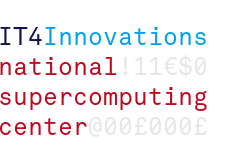Speaker
Dr
Milan Lazecky
(IT4Innovations)
Description
This topic covers current implementation of satellite radar interferometry techniques for routine identification of land processes such as slow landslides, subsidence or slow movement of various objects of infrastructure. Already previous work utilizing IT4Innovations capacities through a virtual machine with commercial software SARPROZ was performed and various interesting results demonstrated practical applicability of its Persistent Scatterers technique in monitoring bridges, dams, houses standing on moving hill slopes etc. With the emerge of European Copernicus programme, the need of effectivity in satellite Big Data processing increased. Currently there are two Sentinel-1 satellites observing the Earth with 6 days revisit time, sending daily 100 TB of data to be archived. Not long time ago, CESNET has accepted the role of assessing Copernicus Ground Segment programme for Czechia. A database mirroring Sentinel data over Czechia is to be established. Mimicking TU Leeds' LiCS project for early identification of land issues (by observing tectonic and volcanic movements in selected areas, worldwide), a potential service based on interferometric processing of Sentinel-1 data from this database has been prepared. As a basis of the system, several open-source projects were deployed, including MySQL-based burst metadatabase (TU Leeds), ISCE TOPS Processor (NASA/JPL), doris coregistration algorithm (TU Delft) and StaMPS Small Baselines processor (Stanford University). Though more functionality can be rapidly developed, incorporating some of own post-processing algorithms, even current early version of the system can yield interesting results by a fully automatic processing chain (the only user input is a box of coordinates of area to be processed). Several examples will be given in this contribution, explaining both potential of the technique (e.g. to generate a nationwide landslide map or precisely observe changes in subsidence velocity in mining areas), as well as the system architecture.
Primary author
Dr
Milan Lazecky
(IT4Innovations)

